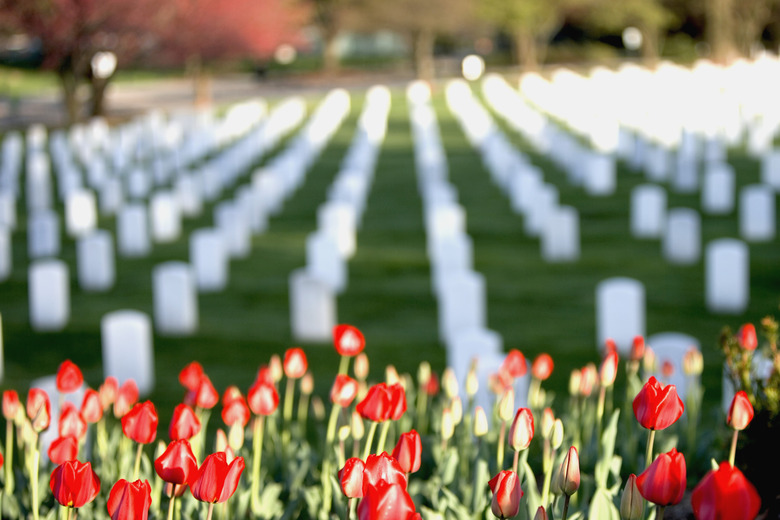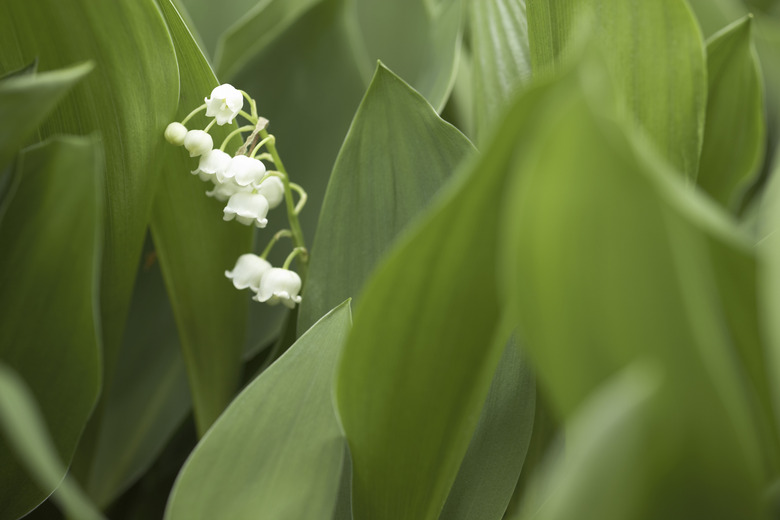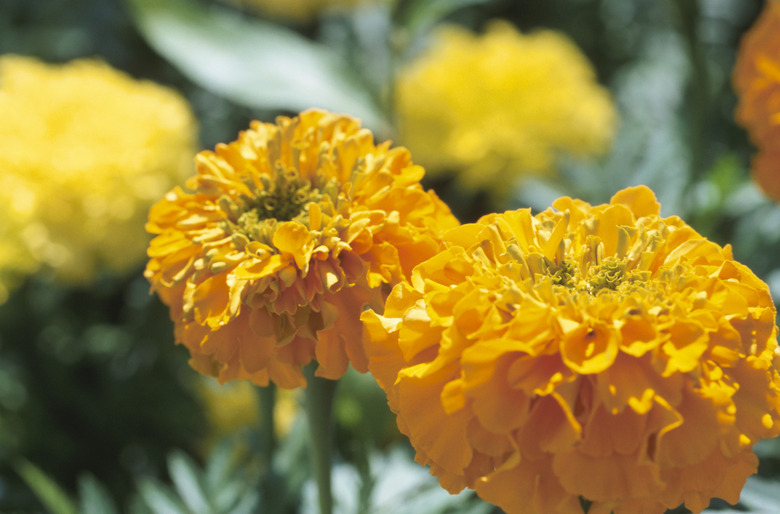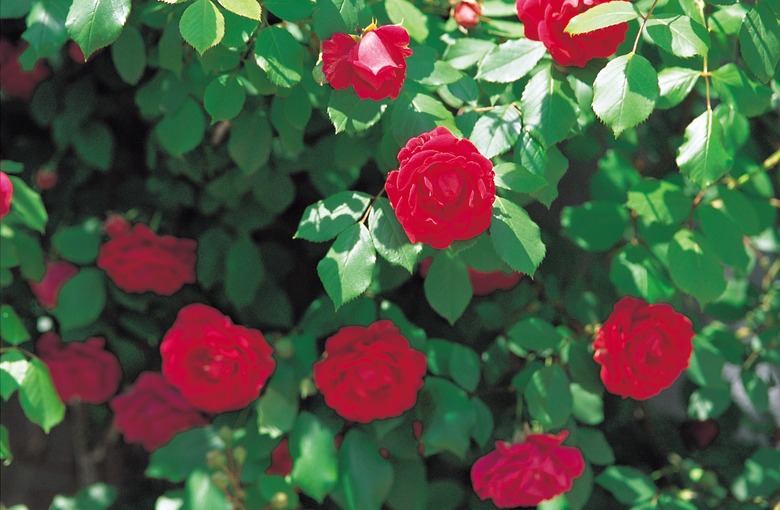Flowers To Plant At The Cemetery
Flowering plants can be set out at a cemetery to brighten the area for those who visit it. People can plant spring bulbs, annual and perennial plants, and flowering shrubs at a cemetery as long as growing conditions allow. However, more important than growing conditions are the regulations of the particular cemetery. Some organizations restrict the height of the plants, as well as the use of specific containers to hold arrangements. Always research your cemetery's restrictions before purchasing plants to use on a plot.
Perennials
Lily-of-the-valley, violets and Johnny jump-ups are old-fashioned, low-growing flowers that will return year after year. Vinca is an evergreen flowering plant that can be used in rocky or tree-lined areas where graves cannot be placed. Spring flowering bulbs, such as hyacinth, crocus, tulip, daffodil and jonquil, are bright additions in front of a large headstone. The stone can be flanked with iris plantings which will bloom when the spring flowers fade away. Short lily plants are summertime perennial blossoms that add beauty to the lot. The chrysanthemum can be planted and may winter over as a perennial in some areas.
- Flowering plants can be set out at a cemetery to brighten the area for those who visit it.
Annuals
Flowers that grow to a height of 18 to 24 inches are the maximum length for annuals on a grave. Taller plants could overpower a small headstone or cover the wording on it. Geraniums are hardy annual plants that work well at a cemetery. When potted, they can be set into the ground in the spring and lifted out when the fall frost sets in. Geraniums can also be planted with blue lobelia and white petunias for a patriotic appeal. Marigolds, zinnia, impatiens, alyssum, ageratum, cockscomb, salvia and pansies all add color and texture to a grave plot.
Flowering Shrubs
Roses, azalea, rhododendron and spirea flowering shrubs can be planted in a cemetery that receives landscaping care. However, the bushes can grow out of control if they are not attended to. Summer hydrangea plantings that reach a maximum height of 3 to 4 feet will beautify a cemetery. Lilac bushes that are kept trimmed to a height of 5 to 6 feet can be located at the edge of a cemetery or in a location where there is a communal sitting area for visitors.
- Flowers that grow to a height of 18 to 24 inches are the maximum length for annuals on a grave.
- Roses, azalea, rhododendron and spirea flowering shrubs can be planted in a cemetery that receives landscaping care.



